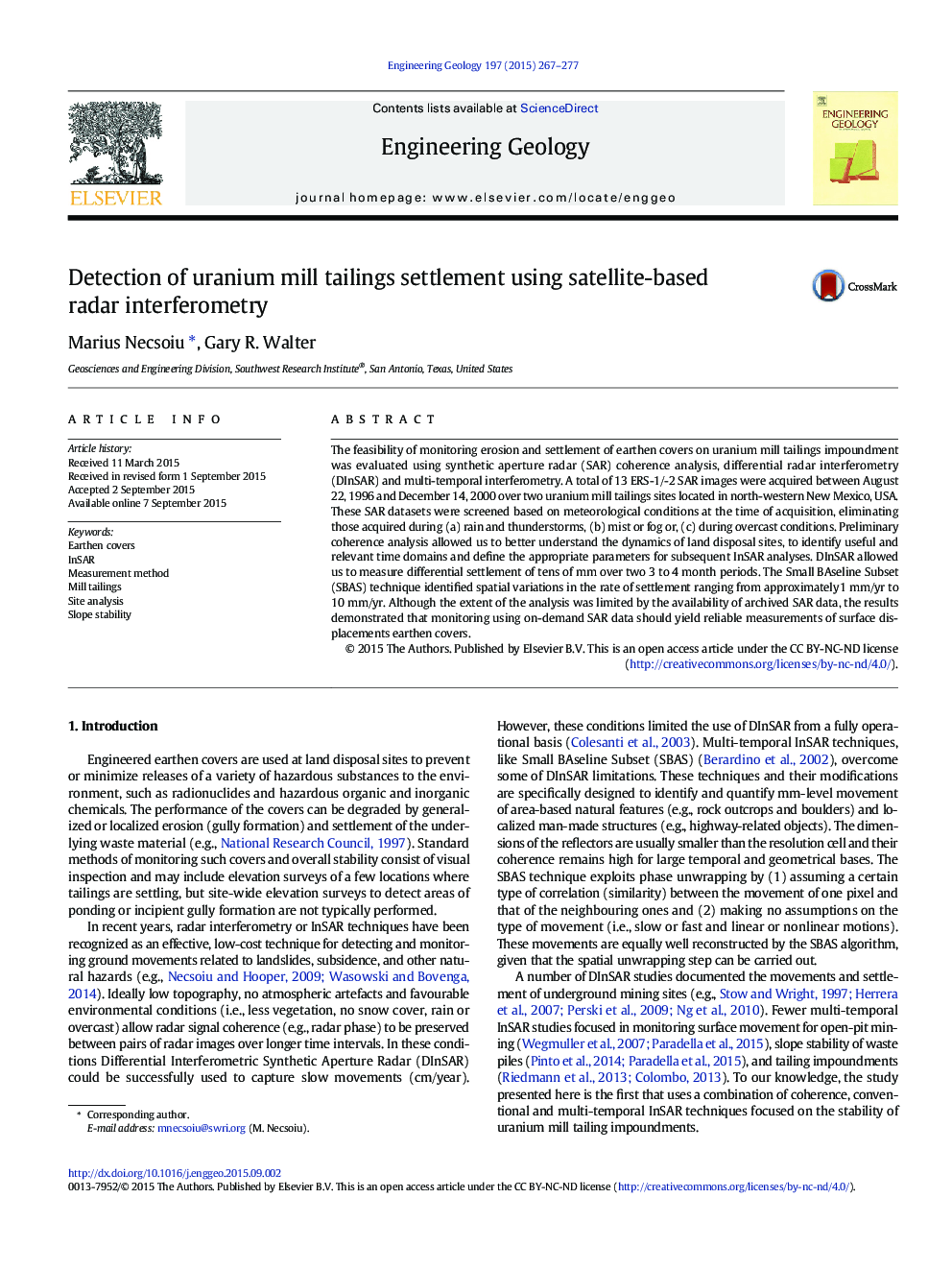| Article ID | Journal | Published Year | Pages | File Type |
|---|---|---|---|---|
| 6447706 | Engineering Geology | 2015 | 11 Pages |
Abstract
The feasibility of monitoring erosion and settlement of earthen covers on uranium mill tailings impoundment was evaluated using synthetic aperture radar (SAR) coherence analysis, differential radar interferometry (DInSAR) and multi-temporal interferometry. A total of 13 ERS-1/-2 SAR images were acquired between August 22, 1996 and December 14, 2000 over two uranium mill tailings sites located in north-western New Mexico, USA. These SAR datasets were screened based on meteorological conditions at the time of acquisition, eliminating those acquired during (a) rain and thunderstorms, (b) mist or fog or, (c) during overcast conditions. Preliminary coherence analysis allowed us to better understand the dynamics of land disposal sites, to identify useful and relevant time domains and define the appropriate parameters for subsequent InSAR analyses. DInSAR allowed us to measure differential settlement of tens of mm over two 3 to 4 month periods. The Small BAseline Subset (SBAS) technique identified spatial variations in the rate of settlement ranging from approximately 1 mm/yr to 10 mm/yr. Although the extent of the analysis was limited by the availability of archived SAR data, the results demonstrated that monitoring using on-demand SAR data should yield reliable measurements of surface displacements earthen covers.
Related Topics
Physical Sciences and Engineering
Earth and Planetary Sciences
Geotechnical Engineering and Engineering Geology
Authors
Marius Necsoiu, Gary R. Walter,
